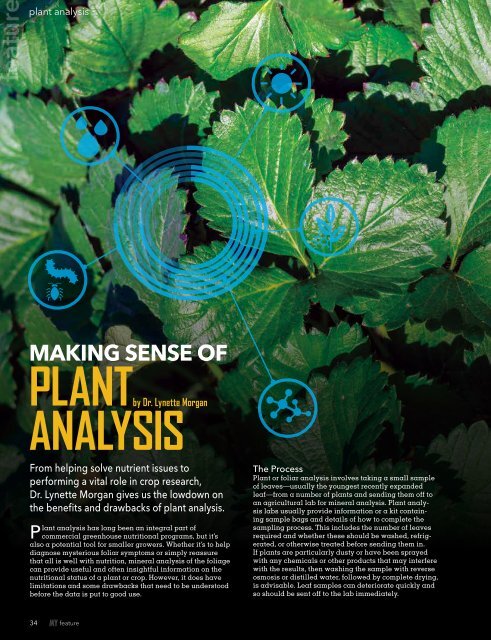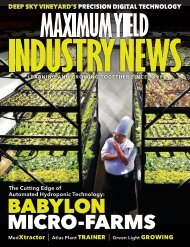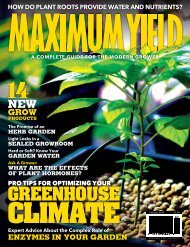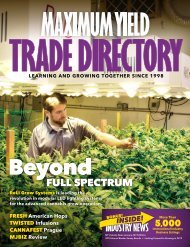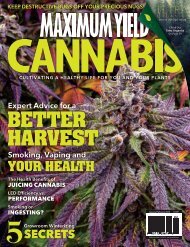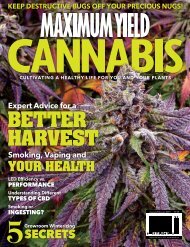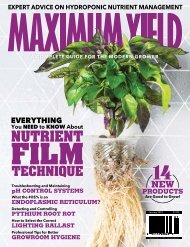Maximum Yield Canada July/August 2017
While hydroponics is unlikely to overtake traditional agriculture economically anytime soon—current US annual crop production is estimated at $143 billion while hydroponics is valued at a mere $600 million—it’s not so much as how much is being grown but where. Today, nobody knows what society will be like in 2100. We hope it will be a peaceful, healthy, and happy place.
While hydroponics is unlikely to overtake traditional agriculture economically anytime soon—current US annual crop production is estimated at $143 billion while hydroponics is valued at a mere $600 million—it’s not so much as how much is being grown but where. Today, nobody knows what society will be like in 2100. We hope it will be a peaceful, healthy, and happy place.
You also want an ePaper? Increase the reach of your titles
YUMPU automatically turns print PDFs into web optimized ePapers that Google loves.
feature<br />
plant analysis<br />
MAKING SENSE OF<br />
PLANT by Dr. Lynette Morgan<br />
ANALYSIS<br />
From helping solve nutrient issues to<br />
performing a vital role in crop research,<br />
Dr. Lynette Morgan gives us the lowdown on<br />
the benefits and drawbacks of plant analysis.<br />
Plant analysis has long been an integral part of<br />
commercial greenhouse nutritional programs, but it’s<br />
also a potential tool for smaller growers. Whether it’s to help<br />
diagnose mysterious foliar symptoms or simply reassure<br />
that all is well with nutrition, mineral analysis of the foliage<br />
can provide useful and often insightful information on the<br />
nutritional status of a plant or crop. However, it does have<br />
limitations and some drawbacks that need to be understood<br />
before the data is put to good use.<br />
The Process<br />
Plant or foliar analysis involves taking a small sample<br />
of leaves—usually the youngest recently expanded<br />
leaf—from a number of plants and sending them off to<br />
an agricultural lab for mineral analysis. Plant analysis<br />
labs usually provide information or a kit containing<br />
sample bags and details of how to complete the<br />
sampling process. This includes the number of leaves<br />
required and whether these should be washed, refrigerated,<br />
or otherwise treated before sending them in.<br />
If plants are particularly dusty or have been sprayed<br />
with any chemicals or other products that may interfere<br />
with the results, then washing the sample with reverse<br />
osmosis or distilled water, followed by complete drying,<br />
is advisable. Leaf samples can deteriorate quickly and<br />
so should be sent off to the lab immediately.<br />
34 feature


